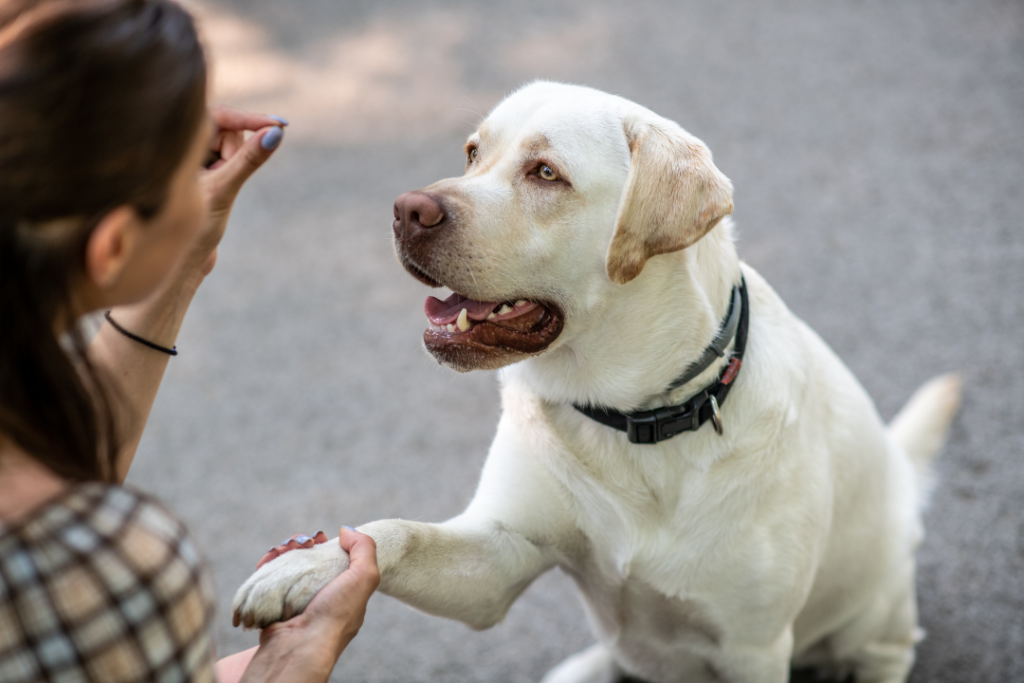Mastering the Canine Mind: A Guide to Becoming a Dog Behaviorist
Hey, fellow canine enthusiasts! 🐾 In the vast, intricate world of dog training, there lies a specialized branch focused on understanding the very psyche of our furry pals. We often marvel at their behaviors, quirks, and unique personalities. This is where a dog behaviorist steps in. We’re here to unravel the deep, often puzzling, psyche of dogs, providing insights and resolutions to behavioral challenges. Ready for a deep dive? Let’s fetch those details!

Understanding Dog Behavior
Basic dog behaviors and what they mean
Our lovely four-legged friends communicate in myriad ways. From tail wagging to playful bows, each gesture is a small window into their world. For instance, a vigorously wagging tail often means excitement, but if it’s low and slow, it might signal insecurity or nervousness. Likewise, a growl could be a playful invitation or a stern warning. The playful bow? It’s like them saying, “Hey, let’s have some fun!”
The difference between training and behavior modification
Training and behavior modification may seem like two sides of the same coin, but they’re distinct. Training involves teaching our pups new commands and tricks, like ‘sit’, ‘stay’, or ‘roll over’. On the flip side, behavior modification delves into changing existing behaviors. Think of a dog that barks incessantly at the mail carrier. A behaviorist would address and modify this specific behavior.
Educational Requirements
The path to becoming a dog behaviorist often begins with an educational foundation. While not strictly mandatory, having a background in veterinary studies, animal sciences, or even psychology can provide a significant advantage. Aspiring behaviorists often pursue specialized courses, soaking in topics like canine behavior, animal learning, and ethology. Certifications? Oh, they’re the golden tickets in the field! Gaining credentials from renowned organizations, like the International Association of Animal Behavior Consultants (IAABC) or the Association of Professional Dog Trainers (APDT), sets you apart, validating your expertise and passion.
Gaining Practical Experience
While books and courses provide a wealth of knowledge, nothing compares to real-world, hands-on experience. Every dog is unique, with its temperament, quirks, and behaviors. Volunteering at local shelters can be an invaluable starting point. Here, you’ll encounter a wide variety of dogs, each presenting its own set of behavioral challenges. Seeking internships or apprenticeships under seasoned professionals can be a game-changer, offering on-the-job training and insights. Don’t forget the workshops and seminars! They’re gold mines of information, techniques, and networking opportunities.
Building a Professional Network
Ever heard the saying, “It’s not just what you know, but who you know?” Networking plays a pivotal role in the canine behaviorist realm. Joining reputed organizations, such as APDT or IAABC, can connect you with experienced professionals and valuable resources. These memberships often come with perks like invitations to exclusive conferences and events. Building relationships with mentors, those who’ve been in the trenches and have a wealth of experience to share, can shape your journey and open doors you never knew existed.

Setting Up Your Practice
So, you’re ready to carve out your niche in the canine world? Setting up a practice requires a blend of expertise, business acumen, and a dash of marketing flair. Decide on your location, identify your target audience, and outline the services you’d offer. Ensure you’re equipped with essential tools, ranging from sturdy leashes to specialized training aids. In today’s interconnected world, an online presence is indispensable. Harness the power of social media, maintain an engaging blog, and employ effective SEO strategies to make your mark.
Staying Updated in the Field
In the ever-evolving field of canine behavior, staying updated is crucial. With fresh research, techniques, and tools emerging regularly, continuous learning is non-negotiable. Numerous books, like ‘The Other End of the Leash’ by Patricia McConnell, shed light on dog psychology and behavior. Regularly browsing journals from associations like the IAABC can keep you abreast of the latest developments.
Frequently Asked Questions
Trainers teach new commands and tricks. Behaviorists, meanwhile, delve deep into the canine psyche, addressing and modifying existing behaviors.
While not obligatory, having a related degree can give you a competitive edge in the field.
Depending on your dedication, gaining the necessary education and hands-on experience can span anywhere from two to several years.
Absolutely! As dog ownership grows, and as we strive for harmonious human-dog relationships, the demand for experts in the field is ever-increasing.
From dogs with deeply entrenched behaviors to navigating the dynamics between pets and their owners, the challenges are varied but always surmountable with the right approach.
Active networking, attending seminars, and becoming a member of professional organizations can lead you to potential mentors.
Conclusion
Embarking on the path to becoming a dog behaviorist is both exciting and rewarding. While challenges are par for the course, the joy of deciphering the canine mind, and making tangible differences in the lives of dogs and their owners, is unparalleled. So, to all budding behaviorists: tighten those leashes and step confidently onto this journey of discovery!
Stay pawsitive and keep wagging with the CRT K9 blog for more insights! 🐶💖
